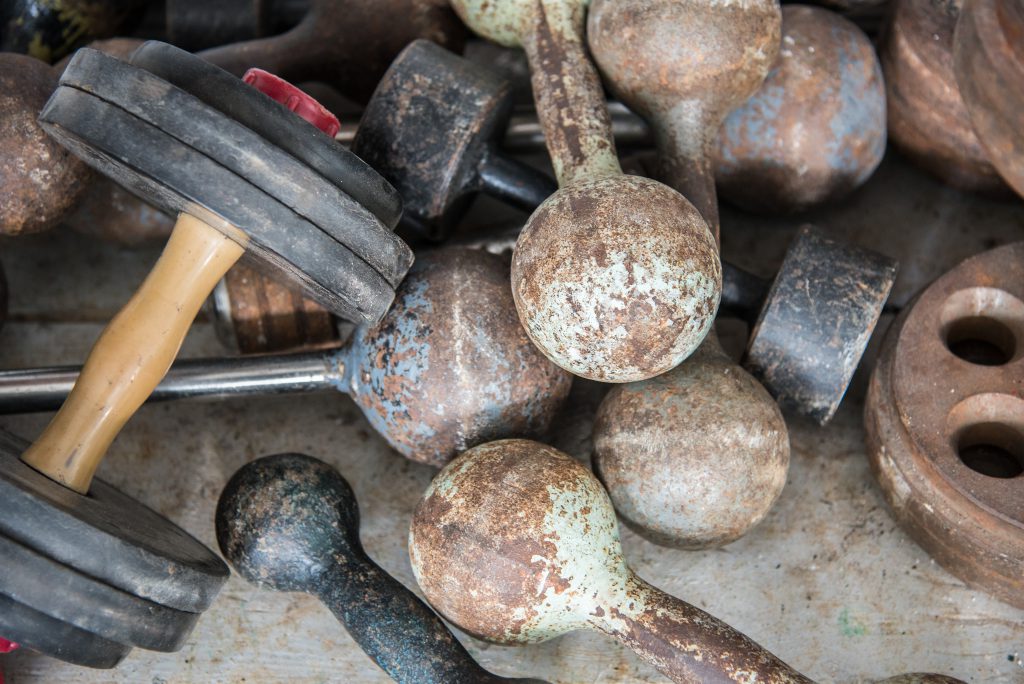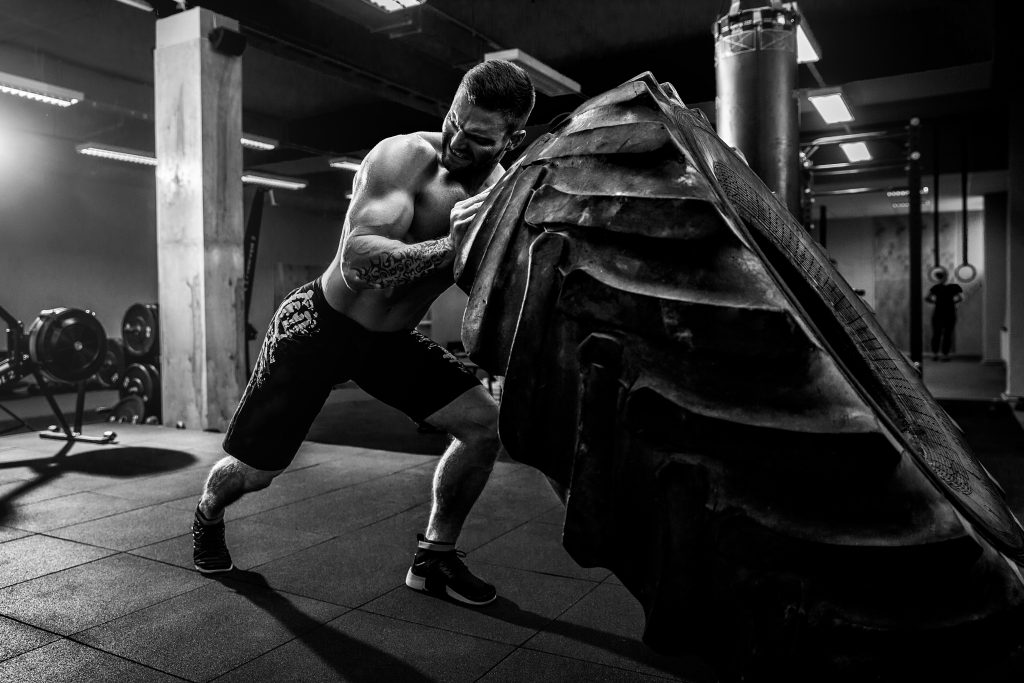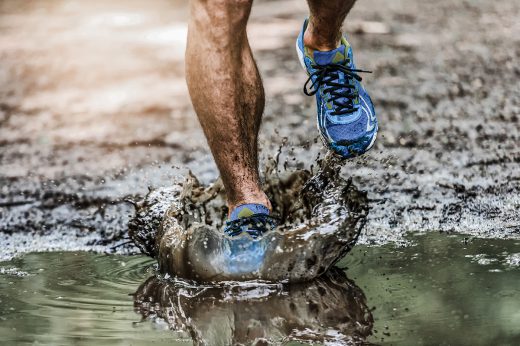This is part 2 in our Lift Dirty series, which focuses on setting up an exercise space. Part 1 discussed what building materials and construction equipment makes the best workout gear.
Dirty gym equipment is heavy and awkward and usually makes a mess. It’s best not to perform these movements on a surface you care about. Unless you are okay with making a hole in your yard, dropping large stones on back grass is not the best idea. Dropping them on your garage floor is even worse.
For this style of workout, it’s best to find an outdoor location where you can store your materials out of the elements — metal rusts — and also destroy the earth. A pit or box filled with sand works great. The sand functions as a cushion on which to drop and slam heavy items. Just make sure no toddlers are playing while you work. Once you have your sandbox built, here are some considerations to take into account for the stones and other items referenced in part 1.

Stones & Cinder Blocks
You will want a collection of stones that enable you to perform a range of movements. Cinder blocks will do if no rocks are available, though they do break more often and lack the imbalance of their natural cousins. Start with three rocks: (1) one the size of a grapefruit that can be lifted with one hand; (2) another the size of a baby that can be brought to the shoulder; and (3) a large rock that can be lifted to the waist. Rocks don’t rust. Keep them in your sandbox.
Sandbags
Old backpacks, duffle bags, or sea bags make great sandbags. Buy sand by the bag, then wrap them in duct tape to prevent leakage before stuffing them in your old backpack. You can make your own sandbags with contractor bags and a shovel. Or stuff old inner tubes with sand and seal the ends with zip ties and duct tape. Store out of the weather.
Sledgehammer
If you’re manly enough you can forge your own, which would be extra cool. For the rest of us, you can source a sledgehammer at Lowe’s, Home Depot, a yard sale, or your favorite hardware store. Store out of the elements.

Logs
Logs can be found in the woods on your next hike. You are looking for a log a foot or more in diameter and about as long as you are tall. Keep in mind that the wider the log is, the heavier it will be, so if you find a 3-foot-diameter log, you can shorten it to keep the weight more or less the same. Keep it in your sandbox and replace as needed, or clear-coat your log for a lifetime of use.
Tires
Tires can often be had for free. Search around locally for old tractor tires; they usually cannot be recycled and the owners have to pay to dispose of them. They are happy to let you take them off their hands. You want a tire large enough to flip (with some difficulty) but not so large you can’t move it. Avoid a tire with the steel wheel inside unless you are confident you can move it around. Keep beside your sandbox.
Buckets
Buckets are commonly found around the house or can be had for a few dollars. Once you have a few buckets with the lids, fill them with sand, rocks, dirt, or anything you have around. I suggest you use duct tape to reinforce the bottom and the lid to help prevent spillage. Try to avoid dropping it with too much gusto, as well, to keep the plastic from cracking.

Caution Tape
Be smart. It’s easy to get hurt lifting objects of irregular size and weight. Most people have been told that you need to lift with a flat back in order to prevent spinal damage. This works when the implements involved are designed to be lifted. The height of a barbell makes that a possibility and is often the safest means of lifting the weight. This, however, is not the only way to safely lift something from the ground.
When attempting to lift a weight from the ground, the key to preventing injury to the spine is to prevent the spine from moving during the lift. This means that if you start with a flat back, your back should remain flat throughout the movement. However, this also means that you can start a lift with a rounded back, provided it stays that way throughout the movement. This is important because many of the implements discussed below require the back to begin rounded due to the lack of handles offered by natural objects. Often in order to lift these objects, your hand must lie on the ground beneath the object, resulting in a rounded posture.
Also be aware that lifting objects that are not necessarily meant to be used as exercise implements can cause bruises, bumps, and scrapes. Rocks are going to be tough on your skin, and the canvas of the sandbag will rub your fingers in new ways.
Tailor the speed of your workout to each implement. A stone lift is meant to develop pure strength and should be performed at a measured pace and at a weight that is challenging in order to recruit the muscle fibers needed for real strength gains. A sandbag clean, by comparison, is designed to elicit total body power and as such should be executed quickly. When in doubt, move slowly with these irregular gym tools until you develop confidence.








Comments